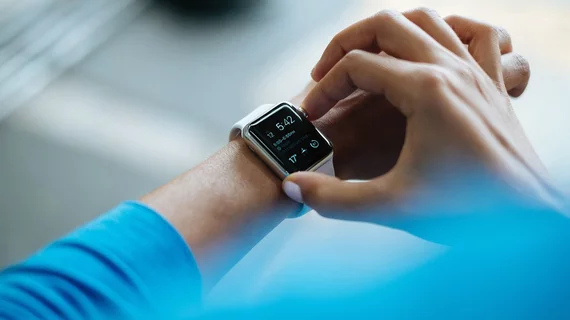AFib screening using wearable devices found to be cost-effective for patients as young as 50
In a massive simulation exercise, researchers recently found that using wrist-worn wearable devices to screen people for atrial fibrillation (AFib) may be more cost-effective than traditional modalities such as pulse palpation and 12-lead electrocardiograms.
Additionally, they found that the devices could potentially be cost-effective for younger age groups than the traditionally recommended age group for AFib monitoring, 65 and above.
Their results were published in Jama Health Forum. Read more on two of their key findings below:
1. Wearable devices may be more cost-effective than traditional AFib detection modalities.
Specifically, the study examined the costs and benefits of six different wearable devices for a simulated population of 30 million people, with ages and comorbidities matching the actual 65-and-older U.S. population. All of the devices had photoplethysmography (PPG) capabilities, and some also had reflexive single-lead ECG capabilities which could be triggered by abnormal PPG signals. For the purpose of their calculations, the authors assumed that any instance of AFib identified by wearable devices would require confirmation with a two-week ECG patch monitor prior to official diagnosis.
Alongside the wearable devices, researchers also simulated costs and benefits of using traditional modalities, as well as no screening at all. While wearable devices and traditional modalities were both deemed preferable to no screening, the wearables came out on top.
“Of eight strategies evaluated in addition to no screening, the economically preferred strategy was wrist-worn wearable PPG followed conditionally by wrist-worn wearable 1L ECG with patch monitor confirmation, having an ICER [incremental cost-effectiveness ratio] just below $60,000 per QALY,” wrote first author Wanyi Chen, PhD, of Massachusetts General Hospital and Harvard Medical School, and colleagues.
2. Wearable devices for detection of AFib can be cost-effective in different age groups, even for those under 50.
The study’s authors also examined whether wearable devices for detection of AFib could be cost-effective for other age distributions. They ran scenarios where they lowered the minimum age of the cohort from 65 to 60, 55, and 50.
Even for the 50-and-up group, intervention with wearable devices (in the manner described above) was cost-effective. For this age group, the authors estimated the cost per QALY to be $90,909—still well under $100,000, the commonly cited threshold to deem intervention cost-effective.
“On balance, such findings suggest that AF screening may be effective and economically acceptable even among individuals below the guideline-based age threshold of 65 years who have risk factors for AFib-related stroke,” the authors wrote.
